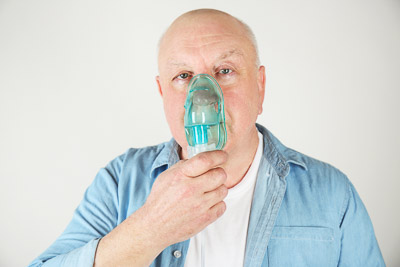6 Facts You Should Know About Adult Onset Asthma

Asthma is a disorder commonly associated with childhood, but it can affect individuals at any time of life. Asthma is a heightened response in the lungs to external stimuli, such as allergens, dust, smoke or other irritants. An attack can result in difficulty breathing, wheezing when breathing, coughing and chest tightness. The shortness of breath can be very uncomfortable and can limit your activities. If you have not experienced asthma as a child, here are a few basic facts that can help you learn to live with this common health problem.
1. Asthma Is Not Just A Problem for Children
Many people develop the disease in the years after adulthood. It can sometimes result from working in an industry that involves dusty conditions or chemical fumes. Other people may be more prone to allergic reactions or respiratory infections. The lining of the airways becomes inflamed and swollen, producing more mucus than normal and causing a number of troublesome symptoms. Individuals may wheeze when they breathe, cough frequently, have shortness of breath or may have a tight feeling around the chest.
2. Certain Factors May Cause Asthma Problems
If you had asthma as a child, it may re-surface in later adult years. Women are more prone to getting this disease, and individuals that are overweight are also at higher risk. If you are trouble with gastroesophageal reflux disorder (GERD), you may also be at higher risk for developing the disease. Although smoking does not cause asthma, it can irritate the respiratory system, which can contribute to more frequent attacks. Respiratory infections can cause asthma symptoms, and living under stress can also have an effect on lung function and the development of asthma.
3. Allergies Trigger Most Asthma Symptoms
Asthma sufferers often experience worse symptoms at certain times of the year when plants begin to produce pollen or when mold growth is most prevalent. Many people with adult-onset asthma find it helpful to do additional cleaning of their home environments or use air purifiers or de-humidifiers to improve indoor air to reduce asthma problems.
4. Not All Asthma Is the Same
Childhood asthma has symptoms that are of short duration. Older individuals may have asthma that is present on a more persistent basis. Individuals over the age of 60 may be especially vulnerable to an attack because of changes in their lung tissue over the years. Physicians categorize asthma conditions as mild and intermittent, mild and persistent, moderate persistent or severe persistent. Treatment will depend on the severity and frequency of your symptoms.

5. A Number of Effective Treatments Are Available
Your physician or allergist can provide a number of treatments for asthma problems. Corticosteroid medications are available in inhalant form, as well as in an oral form. These drugs reduce swelling and the production of mucus that makes breathing more difficult. Bronchodilator medications are used to reduce tightness in the chest that makes it hard to breathe. Some of these drugs are used daily for long-term management of the lung infection, while others help to relieve acute breathing symptoms.
6. Lifestyle Changes Can Help Reduce Asthma Symptoms
If your asthma is caused by allergies, allergy-proofing your house to reduce dust, mold insect residue and other allergens can help you to breathe more comfortably. You may also have to eliminate some foods that make the symptoms worse, such as eggs, wheat, cow’s milk and tree nuts. You should examine your work environment to reduce irritants in the air that can make asthma worse. Many people with asthma must reduce outdoor activities during times of the year when pollen, mold and ozone counts are elevated or cover their mouths with a scarf when they are out in cold, dry weather.
Although asthma can be a troublesome condition, it is a manageable one. A good collaboration between patient, physician and allergist can minimize the frequency of breathing problems to allow you to engage in normal activities. Keeping medications on hand and learning to create a more allergy-free environment are important factors in managing adult-onset asthma symptoms.




